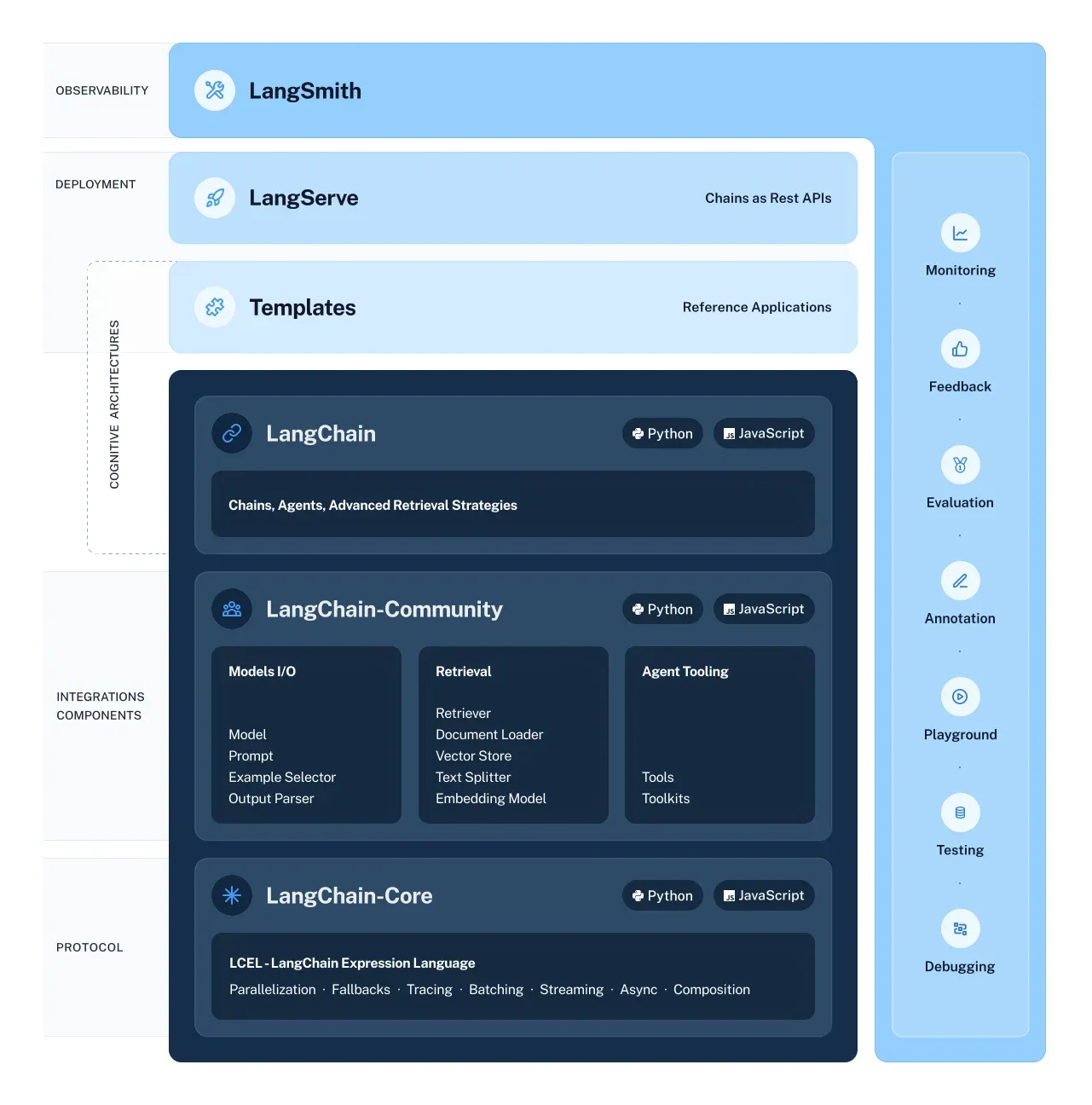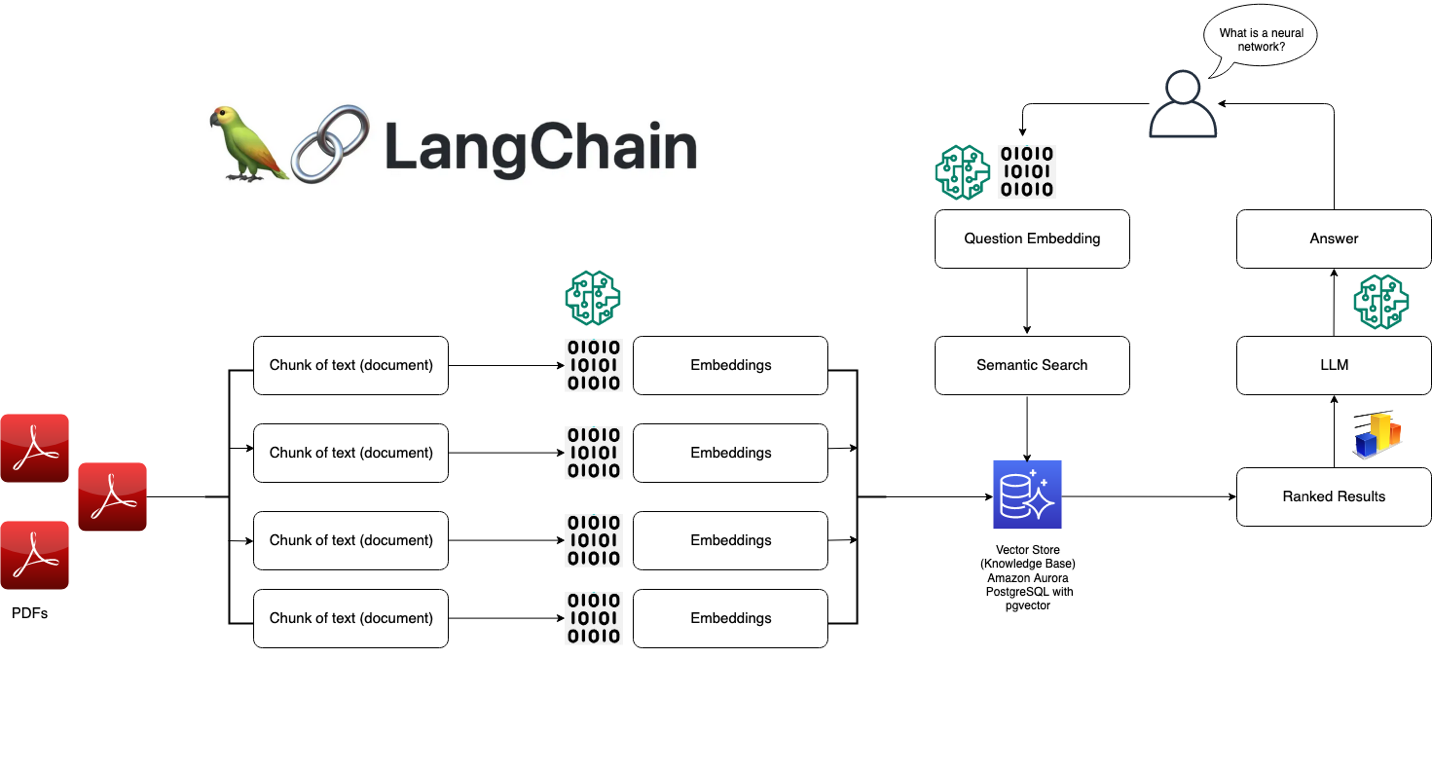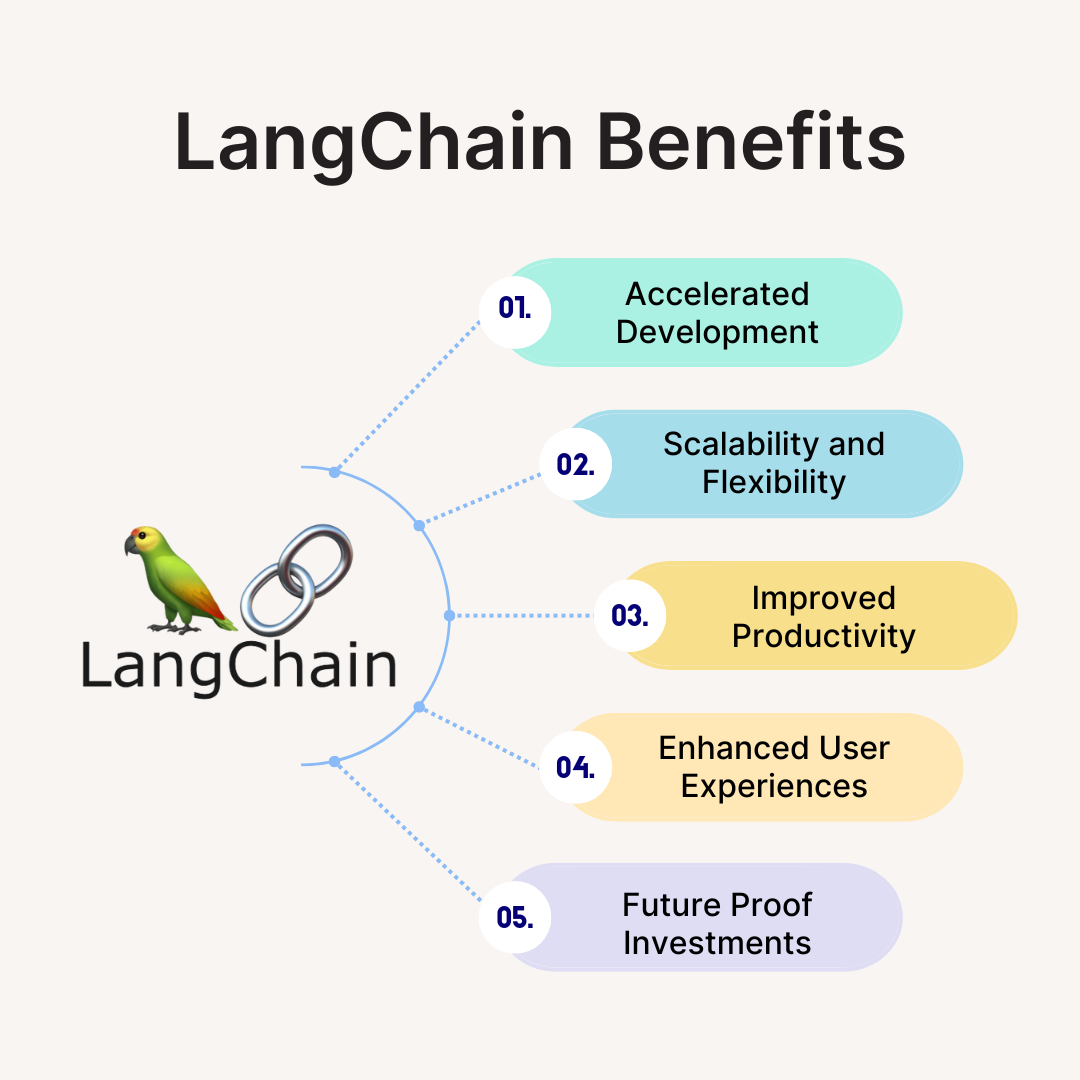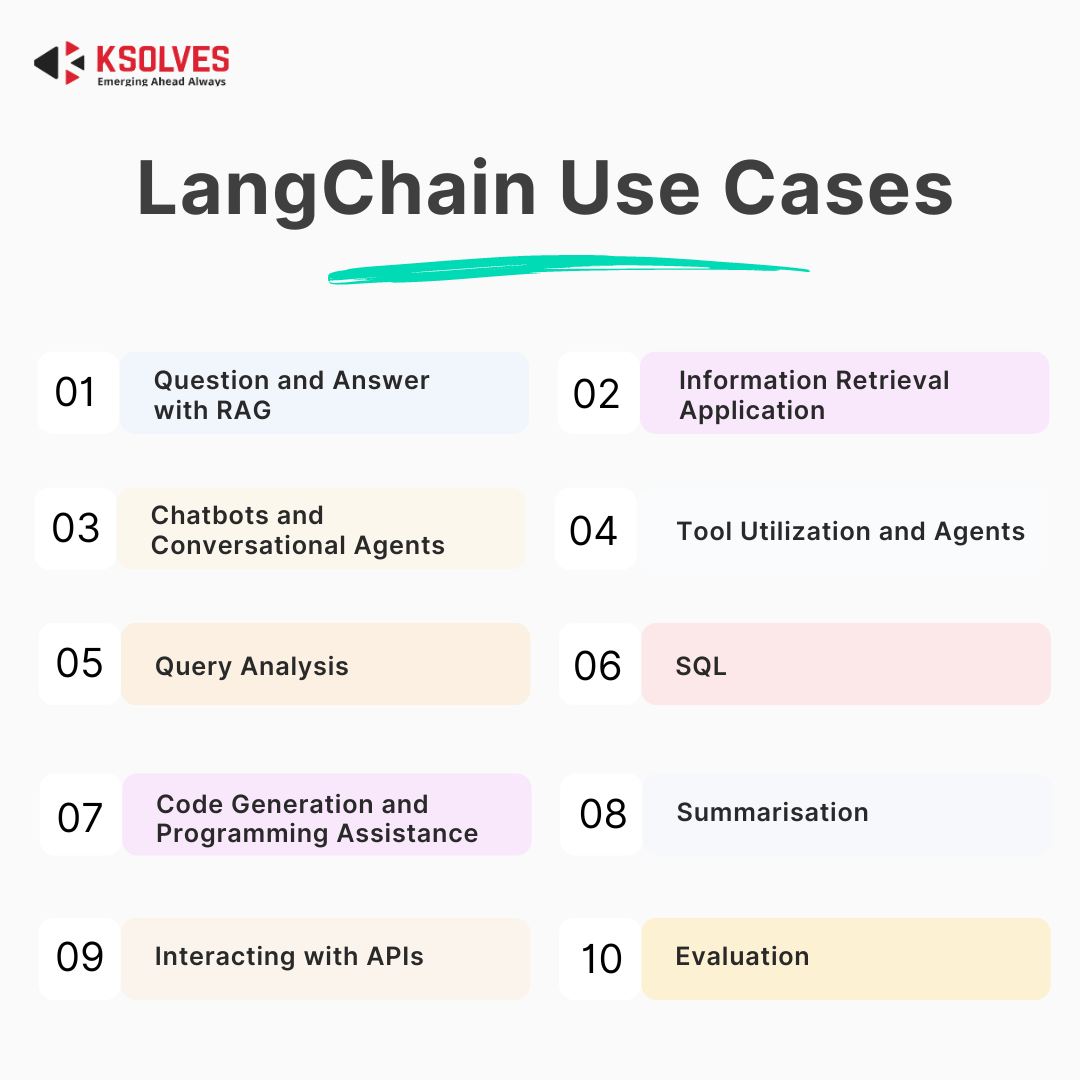Have you ever wondered how to create amazing applications using large language models (LLMs) like GPT-4?
Do you want to learn how to leverage the power of LLMs to build chatbots, code analysis, document summarization, and more?
If you answered yes, then you are in the right place!
In this blog post, we will introduce you to LangChain, a framework that simplifies the creation of applications using LLMs. LangChain is an open-source framework that provides a standard interface for chains, lots of integrations with other tools, and end-to-end chains for common applications.
It allows AI developers to develop applications based on the combined LLMs with external sources of computation and data.
By the end of this blog post, you will learn:
-What is LangChain and why it is useful?
-How to use LangChain to create and deploy LLM-powered applications?
-What are some of the applications and use cases of LangChain?
So, let’s get started!
What is LangChain?
LangChain can be best described as a network of LLMs working together to facilitate seamless communication.

It goes beyond mere translation, embracing the intricacies of language and culture to create a harmonious linguistic ecosystem.
LangChain consists of various essential components that make it a powerful tool for multilingual communication.
These components include language pairs, translation algorithms, linguistic databases, and language professionals who bring their expertise to the table.
How LangChain Works?

Languages are the backbone of LangChain. They form the building blocks that enable communication across cultures.
Each language has unique nuances and expressions, and LangChain recognizes and respects these differences while ensuring adequate understanding and transmission of information.
Translation and Transcription Processes
Regarding LangChain, translation, and transcription processes play a crucial role.
Through sophisticated algorithms and machine learning, text and speech are transposed from one language to another, capturing the essence and meaning behind the words.
Transcription accurately represents spoken language, while translation bridges the gaps between written texts.
Language Mapping and Integration
Language mapping is a fundamental aspect of LangChain. It involves aligning the linguistic structures of different languages to enable seamless translation and communication.
By understanding the syntactic, semantic, and stylistic variations, LangChain maps out the intricate connections between languages, ensuring accurate and contextually appropriate translations.
Technology and Tools for LangChain
Cutting-edge technologies and tools have empowered LangChain to reach new heights.
These advancements have significantly improved the accuracy and efficiency of language-related processes, from neural machine translation models to natural language processing algorithms.
Translation management systems and terminology databases also play a vital role in facilitating smooth LangChain operations.
Why is LangChain Important?

Let’s discuss the significance of LangChain and how it contributes to the world of language processing and translation technology.
Bridging Language Barriers
LangChain addresses the critical issue of language barriers, promoting seamless communication between individuals and businesses from different linguistic backgrounds.
By providing accurate translations, it fosters better understanding and collaboration.
Enhanced Machine Translation
LangChain utilizes advanced technologies to improve machine translation, resulting in more accurate, contextually relevant, and natural-sounding translations, which elevates the overall user experience.
Real-Time Translation Capabilities
Real-time translation is a vital feature of LangChain. This functionality enables users to communicate instantly and hassle-free, overcoming potential delays and misunderstandings due to translation issues.
Cost-Effective Solutions
By offering affordable and efficient language translation solutions, LangChain caters to the needs of businesses and individuals who might otherwise struggle to cover the costs of professional translation services.
Integration with Numerous Applications
LangChain's ability to integrate with a wide range of applications ensures its versatility and adaptability.
It enables users to translate text across various platforms, streamlining their work and communication processes.
Supporting the Linguistic Diversity
LangChain plays an essential role in preserving and supporting linguistic diversity by facilitating translations across numerous languages.
This encourages cultural exchange and understanding, fostering a more interconnected global community.
How to Use LangChain to Create and Deploy LLM-powered Applications

LangChain is a framework that simplifies the creation of applications using large language models (LLMs) such as GPT-4.
In this tutorial, we will show you how to use LangChain to create and deploy LLM-powered applications in a few easy steps.
Step 1
Install LangChain
The first step is to install LangChain on your machine. LangChain is available as a package for both Python and JavaScript.
You can install it using pip or npm, depending on your preferred language.
Step 2
Choose a chain
The next step is to choose a chain for your application. A chain is a combination of components that work together to solve a specific task.
LangChain provides several pre-built chains for common applications, such as chatbots, document analysis, code analysis, and more. You can also create your own custom chain by combining different components.
A component is a modular building block that performs a specific function, such as wrapping an LLM, generating a prompt, or indexing a data source. LangChain has a rich collection of components that you can use to build your chain.
Step 3
Configure your chain
The third step is to configure your chain according to your needs.
You can customize various aspects of your chain, such as the LLM, the prompt template, the data source, the output format, and more.
You can use the config attribute of your chain to access and modify its configuration.
Step 4
Run your chain
The fourth step is to run your chain and see the results. You can use the run method of your chain to execute it and get the output.
The run method takes an input as an argument and returns an output as a result. For example, to run your chatbot chain with a user input of “Hello, how are you?”, you can do:
output = chatbot.run("Hello, how are you?")
print(output)
This will print something like:
“Hello, I'm fine, thank you. How can I help you?”
Step 5
Deploy your chain
The final step is to deploy your chain and make it available to the world. You can use the deploy method of your chain to deploy it as a web service or a mobile app.
The deploy method takes a name and an optional description as arguments and returns a URL or a QR code as a result.
For example, to deploy your chatbot chain as a web service with the name “My Chatbot” and the description “A simple chatbot powered by LangChain and GPT-4”, you can do:
url = chatbot.deploy("My Chatbot", "A simple chatbot powered by LangChain and GPT-4")
print(url)
This will print something like:
"https://my-chatbot.langchain.com"
You can then visit this URL to interact with your chatbot online.
Benefits of Implementing LangChain

Language barriers can slow down communication and hinder collaboration. LangChain bridges this gap by enabling efficient and accurate translation and transcription processes.
With LangChain, conversations flow seamlessly, ensuring that language is no longer a barrier to effective communication.
Cost Savings and Time Optimization
Traditionally, language services required significant financial resources and time investments.
However, LangChain provides cost-effective alternatives, reducing the need for extensive manual translation and interpretation.
By automating language processes, LangChain saves time and money, enabling businesses to allocate resources more efficiently.
Streamlined Language Operations
Implementing LangChain streamlines language operations by centralizing translation and localization efforts.
It eliminates the need for managing multiple language providers and simplifies the coordination of multilingual projects.
With LangChain, businesses can achieve consistency in their language assets, ensuring a cohesive brand voice across different markets.
Suggested Reading:
Using LangChain for Chatbot Development: A Beginner's Guide
Improved Customer Experience
Language is a powerful tool for creating meaningful customer experiences. LangChain enhances customer satisfaction by breaking down language barriers.
It allows businesses to communicate with customers in their preferred language, making interactions more personalized and engaging.
LangChain helps businesses build stronger connections with their global audience by delivering exceptional multilingual support.
What are the Must-Knows for LangChain Implementation?

There are few things one need to know before implementing LangChain-
Choosing the Right Language Pairs
When implementing LangChain, selecting the appropriate language pairs that align with your business goals is crucial.
Consider factors such as market demand, customer preferences, and regional variations. Choosing the correct language pairs can ensure accurate and culturally relevant translations.
Ensuring Data Security and Privacy
Language data often contains sensitive information. To safeguard your data and protect customer privacy, it is essential to prioritize data security in LangChain implementation.
Work with reputable language service providers with robust security measures to prevent data breaches and unauthorized access.
Quality Assurance and Accuracy
Maintaining high translation quality is vital for effective communication. Implementing LangChain requires establishing rigorous quality assurance processes.
Collaborate with skilled linguists and use advanced language technologies to ensure accurate translations and consistency across languages.
Training and Education for Language Professionals
To make the most of LangChain, invest in training and education for language professionals. Please provide them with the skills and tools to leverage LangChain effectively.
Stay updated with language industry trends and encourage continuous learning to keep pace with advancements in language technology.
What are Some of the Applications and Use Cases of LangChain?

LangChain can be used to create a question-answering system that can search specific documents or databases, providing users with precise answers to their queries.
For example, you can use LangChain to build a medical Q&A system that can access medical records, research papers, or drug information and answer questions from patients or doctors.
Chatbots
LangChain can also be used to create chatbots capable of understanding and responding to user inputs, offering a more interactive and engaging experience.
You can use LangChain to customize your chatbot’s personality, tone, and style, as well as integrate it with external data sources or APIs.
For example, you can use LangChain to create a travel chatbot that can help users plan their trips, book flights, and get recommendations.
Content Generation
LangChain can help you generate creative content, such as blog posts, social media captions, or even poetry, based on user inputs or specific topics.
You can use LangChain to control the length, quality, and diversity of the generated content, as well as add your own domain knowledge or style.
For example, you can use LangChain to generate a catchy slogan for your product or a summary of your podcast episode.
Code Completion
LangChain can also assist you with writing code more efficiently by suggesting relevant code snippets based on the current context.
You can use LangChain to leverage the power of LLMs to understand natural language and code, as well as access code repositories or documentation.
For example, you can use LangChain to create a code completion tool that can help you write Python code faster and easier.
Personalized Learning
LangChain can help you create a learning platform that can understand a user’s knowledge gaps and generate customized content to help them learn and grow effectively.
You can use LangChain to adapt the content to the user’s level, interests, and goals, as well as provide feedback and evaluation.
For example, you can use LangChain to create a language learning app that can teach users new words, grammar, and pronunciation.
Suggested Reading:
Discover the Power of Langchain in LLM Application Development
Challenges and Limitations of LangChain
As promising as LangChain may be, it's essential to acknowledge the challenges and limitations that come along with this innovative approach to language communication.
Let's explore some of the key hurdles that need to be addressed for effective LangChain implementation:
Machine Translation Limitations
When it comes to language translation, relying solely on machines has its limitations. While machine translation has nuances and subtleties, these can be lost in automated processes.
Sarcasm, idioms, and cultural references often pose challenges that machines struggle to comprehend. However, machine translation is steadily advancing with human oversight and continuous improvements in artificial intelligence.
Cultural Nuances and Contextual Understanding
Language is deeply intertwined with culture, and effective communication requires understanding cultural nuances and context.
Translating words alone may not capture the intended meaning if the cultural context is overlooked.
Language professionals are crucial in bridging this gap, ensuring that messages are conveyed accurately while respecting cultural sensitivities.
Maintaining Consistency and Brand Voice
In multilingual communication, maintaining consistency across languages is paramount. Brand voice, tone, and messaging must be aligned to preserve a cohesive brand identity.
Translators must deeply understand the brand's values and style to accurately convey the intended message while adapting it appropriately to different languages and cultures.
Adapting to New Language Technologies
Language technologies are evolving, introducing new tools and approaches to facilitate communication.
Staying updated on these advancements can be a challenge.
Language professionals and businesses must continuously adapt and embrace new language technologies, such as neural machine translation and natural language processing, to stay ahead in the LangChain game.
Conclusion
LangChain empowers us to break down language barriers and foster meaningful connections in a globalized world. Despite its challenges, the future of LangChain looks promising with advancements in AI, IoT, blockchain, and augmented reality.
By following best practices and staying open to innovation, you can harness the power of LangChain to unlock new opportunities and ensure effective communication across languages.
Embrace the LangChain revolution and explore the possibilities for you and your organization. Let's build a world where language is no longer a barrier but a unifying force.
Get ready to discover the ultimate AI Chatbot maker platform: BotPenguin! It's the cream of the crop when it comes to creating chatbots that are ready to conquer the digital world.
Frequently Asked Questions (FAQs)
What are Large Language Models (LLMs)?
LLMs are advanced artificial intelligence models that process and generate human-like text, capable of understanding and producing language at a sophisticated level.
How are LLMs trained?
LLMs are trained on vast amounts of text data, using techniques such as unsupervised learning and neural networks to develop their language processing capabilities.
What are the applications of LLMs?
LLMs have various applications, including language translation, content generation, chatbots, question answering systems, language understanding, and more.
Can LLMs understand and generate content in multiple languages?
Yes, LLMs can process and generate text in multiple languages, depending on the training data and the specific language capabilities of the model.
Are there any ethical concerns with LLMs?
Yes, LLMs ethical concerns include potential biases in training data, spreading misinformation, impersonation risks, and the responsible use of powerful language generation technologies.
Are there any limitations or challenges with LLMs?
Yes, LLMs may sometimes produce inaccurate or biased responses, struggle with understanding context, and require extensive computational resources for training and deployment. Continuous research aims to address these limitations.


